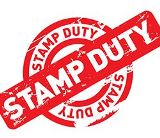WHAT IS STAMP DUTY?
Stamp duty is an unavoidable rung on the ladder of purchasing property within Australia. Stamp duty is a tax that is charged by the government on the sale of property and shares to cover the costs of changing the title of the property and ownership details, the costs of which vary state to state.
The amount you pay in stamp duty is based on the greater of the market value of the property or the price paid, including any GST. Simply put, the more expensive a property, the higher stamp duty rate that must be paid.
When do you have to pay stamp duty?
Stamp duty is paid by the purchaser and must be finalised within 30 days of the property settlement.
What is the money used for?
Stamp duty is invested into the economy by the state and territory governments which collect it. This revenue is added into all state government budgets, which typically include sectors such as health, transport and roads, police, justice and emergency services.
How much do buyers spend on stamp duty?
Stamp duty is decided by separate state and territory governments, rather than the Federal Government, so rates vary. Most state and territory governments have online calculators, as do some real estate agency and bank websites. Always make sure you are clear on the amount of stamp duty you will be required to pay and be sure to factor this into your budget.
Are there any exemptions?
There are a handful of instances where stamp duty is not required to be paid. The transfers of ownership to a spouse, as well as a change of tenure, do not require duty payment. A number of concessions also apply which have the potential to dramatically reduce the amount of stamp duty payable, for example, buyers purchasing a residence that they intend to occupy as their home or purchasing a property intended to be their first home, may be eligible for some concessions. You would need to check with your lender to see what concessions you may be able to apply for.
Source: www.realestate.com.au

